Living off the grid has become extremely popular in the US over the past couple of years, with several people building cabins out in the countryside. Escaping the noise and pollution of big cities, along with skyrocketing real estate and utility costs, are some of the main reasons people choose to live off the grid.
One of the most important aspects of living off the grid is having a reliable power supply. Jackery Solar Generators are one option you could consider, as they can run most of the appliances in your cabin. This guide will discuss the pros and cons of living in an off-grid cabin, some off-grid cabin plans, and the best solar generators you can consider.
Key Takeaways
This section offers a quick summary of the key points discussed in this detailed guide:
- Building a cabin off the grid requires a lot of careful planning and budgeting.
- There are several pros and cons to building an off-grid cabin plan, such as the proximity to nature and self-sufficiency, as well as the high initial costs and feeling of loneliness on the flip side.
- You must carefully plan the budget for your off-grid cabin plan to ensure you don’t skimp on the quality of the materials.
- Jackery Solar Generator is a reliable option that can run most of the appliances in your cabin. Depending on your needs, it charges via solar energy or a wall charger.
What is an Off-Grid Cabin?
An off-grid cabin is one that’s built in a remote place and is not dependent on public utilities such as electricity, water, and heat. People usually build these cabins in the countryside, away from the rush of the big cities, so they can enjoy the peace and quiet and be self-sufficient.

Another version of off-grid living involves being self-sufficient in terms of public utilities but also not relying on any technology and growing one’s own food. This is a more extreme version and is also an approach that preppers often adopt and discuss on prepper forums.
Benefits & Challenges of Off-Grid Cabins
Off-grid cabins offer their residents several benefits in today’s economic climate, where home or real estate prices and utilities like gas and electricity are at an all-time high. However, they also have their fair share of downsides, such as the lack of easy access to markets as one does in a bigger city and the lack of being connected with those around them during emergencies. This section explores the different benefits and challenges of off-grid cabins.

Benefits of Off-Grid Cabins
Off-grid cabins certainly offer a whole range of benefits, and this section lists some of them in detail.
- Environmental Sustainability: When you live off the grid, you’re likely to rely on a renewable source of energy, such as wind or solar energy. Relying on these renewable energy sources to power up your home reduces your overall carbon footprint and helps mitigate the damaging effects of climate change.
- Cost-effective: Living off-grid in a cabin can be a lot more cost-effective and save you more money in the long run despite the higher initial cost of setting up the place. While the solar panels and power stations will cost you initially, these costs are made up for as your energy bills remain non-existent.
- Energy Independence: Using solar energy or any other such renewable source allows you to live independently from the electricity grid. The grid is sometimes prone to outages or other disruptions during natural disasters like heat waves and the hurricane season in the US. Having your solar generator ensures that you’re not affected by power outages and that you’re connected with your loved ones during emergencies.
- Living Closer to Nature: One of the main reasons why people choose to live off the grid is to be closer to nature and away from the pollution of a big city. It offers them a better way to deal with stress levels and live in a calmer environment.
Challenges of Off-Grid Living
While living off the grid has several benefits, it also has its fair share of drawbacks, and this section explores them in detail.
- High Initial Cost: You should expect the initial cost of building your off-grid cabin to be on the higher side. These costs account for the materials, equipment, appliances, furnishings, and the entire solar energy system, including batteries and solar panels.
- Requires Skill: Building your cabin from scratch will require a lot of skill as you’ll need to build the foundation, the frame, and all the woodwork, as well as set up the entire water supply and plumbing mechanism for your cabin.
- Limited Access to Resources: Limited access to resources in remote places is among the biggest drawbacks of living in an off-grid cabin. Energy is one of the foremost examples, especially since you’ll have to rely on solar energy instead of the primary electricity grid. Similarly, water is another resource that you’ll have to find alternatives for, such as water or rainwater harvesting.
- Isolation and Loneliness: You’ll also have to ask yourself if you’re okay with the isolated nature of living in an off-grid cabin, especially if you’re not living in a settlement. If you prefer social interactions with neighbors and others around you, living off the grid will be challenging.
How to Design Your Off-Grid Cabin
Once you’ve decided to build yourself or your family an off-grid cabin in a rather remote location, there is a lot to consider. From designing an intuitive floor plan to ensuring the design allows for adequate natural light to flood your cabin, there are several things you’ll have to account for. This section explains each key element in detail so you can understand the key aspects to consider.
Plan and Prepare Before You Start Building
You’ll have to plan and prepare for several things before you start building your cabin. The first aspect is to find the right piece of land and analyze it in terms of the cost and accessibility to markets and to get the raw materials for your cabin delivered.
Another factor you’ll need to consider is the building codes you’ll need to follow based on the regulations in the area. You’ll also have to account for the kind of power sources you want to use to run your household appliances.
The cost of the land will play a key role, and you will have to account for this in your final budget. You will also have to consider the cost of the raw materials, transportation, plumbing, water supply, etc.
The budget will also have to account for all the power tools you need to build the cabin and whether or not they will be battery-operated or require a power source. While some smaller devices like drills and angle grinders can be battery operated, others, such as a table saw and a band saw, will most likely require a steady power supply.
Lastly, a few key budget-related questions you’ll have to ask yourself include:
- How many public utilities will you not rely on or disconnect from?
- What tools will the construction of your cabin require, and how many will you have to purchase?
- How do you plan on transporting the raw materials for the construction to the building site?
- Have you accounted for the needs of each and every space in your cabin when designing your floor plan?
Optimizing Your Space
Since off-grid cabins are typically smaller than conventional homes, you will have to find intelligent ways to optimize the space in each room to ensure comfort and functionality.
Some of the best ways to optimize space in a smaller home include:
- Use multifunctional furniture such as sofa-cum-beds, tables, and benches that offer storage spaces within them, beds with a bookshelf on the headboard, etc.
- You can also use the vertical space in your cabin for shelves, wall-mounted cabinets, and racks.
- Try incorporating floating furniture wherever possible, creating the illusion of a spacious interior.
- Choose light and bright color schemes to help create a sense of space within your cabin.
Maximize Natural Light
Given that one of the primary reasons for building an off-grid cabin is to reduce expenses, one of the best ways to do this is by maximizing the natural light in your home. This reduces your need for artificial lighting during the day and your heating needs to some extent.
Placing your windows facing the south and east directions can help flood your space with plenty of natural light. Additionally, designing larger windows will allow more light to enter and add to a sense of space and light inside your cabin.
Additionally, you can also use skylights, mirrors, lighter paint themes, and other reflective materials to ensure your space is as bright as possible during the day.
Minimize Your Energy Consumption
Since you won’t have access to a continuous electricity supply from the grid, you must be careful about your energy consumption. You can choose energy-efficient appliances, lighting fixtures, propane stoves, and low-flow faucets. Another solution discussed above is ensuring maximum natural light in your home to reduce your dependence on artificial light during the day.
You can also use effective insulation, ventilation, and shading to regulate the temperature in your cabin and reduce your heating and cooling needs, as these solutions use a lot of energy.
Customize Your Design
Once you’ve taken care of all the general aspects of your home, you can focus on customizing your cabin’s design to suit your preferences and tastes.
You can choose from a range of colors for the theme of the interior, different materials for your furniture and other furnishings, and even the decor. You can also personalize the space with photographs, artwork you may have made yourself, and so on.
Off-Grid Cabin Plans
Once you’ve planned your cabin down to every last detail, you’ll have to focus on the final floor plan and start building your cabin itself. This section takes you through four floor plans that you can reference for your own off-grid cabin.
This is the first off-grid cabin floor plan for the ground floor.

As you can see in the image above, the plan has a reasonable total built-up area that you can change based on how much space you need. The main cabin has a kitchenette, a bed, and a bathroom, which all fit into it. The porch has an outdoor seating area with a table and two chairs.
The plan also incorporates a water tank outside to store all your water supply.
The second layout, as shown here, is much larger. The first section on the left can serve as a living space or a porch and can have seating for you and your family, giving you the room to spend time in the fresh air.

The second portion on the right features a large kitchen, an indoor water tank, and a spacious bathroom.
The next layout is a ground-floor plan with a porch leading up to the house. The interior features a bedroom, a living room, a utility room, and a bathroom. It also has a spacious kitchen.
As you can see, this layout offers plenty of space, along with windows in all key spaces, which allow lots of natural light into your cabin’s interior.
 The last layout depicts a floor plan for the main level. It has a covered porch that surrounds the cabin on two sides, offering space to add lots of outdoor furniture and create a comfortable space to laze around in.
The last layout depicts a floor plan for the main level. It has a covered porch that surrounds the cabin on two sides, offering space to add lots of outdoor furniture and create a comfortable space to laze around in.
 The cabin's interior features a living-dining area, a kitchen, a bedroom, a bathroom, and even a pantry. Several windows allow natural light to flood the cabin during the day.
The cabin's interior features a living-dining area, a kitchen, a bedroom, a bathroom, and even a pantry. Several windows allow natural light to flood the cabin during the day.
How to Build an Off-Grid Cabin
Building your off-grid cabin requires a meticulous approach at every step. From laying the foundation to executing the layout of your choice and choosing the right materials, every aspect will affect the quality of the finished cabin. This section explains the various steps of this process in detail.
Step 1: Select the Right Logs
When choosing the right logs, choose those at least 10” in diameter and about 4’ longer than the length of your cabin. Make sure to pick straight logs so they’re easier to work with. If you're debarking them yourself, give them at least six months to dry out.
Step 2: Laying the Foundation
If you’ve done your research, then you’ll know that there are three common types of foundations: strip, raft, and pad foundations.
- Raft Foundations: The key purpose of a raft foundation is to distribute the weight of the entire cabin on the site floor. This approach uses a large, single concrete block, which is easier and more affordable than other options.
- Strip Foundations: Strip foundations are ideal where the cabin site has a base of solid soil and no water logging.
- Pad Foundations: Pad foundations are typically the least expensive option and involve setting four concrete piers on all four corners of the cabin.
Step 3: Raise the Log Walls
The two popular approaches to raising the log walls are the Butt and Pass and the Saddle and Notch.
- Butt and Pass:The butt and pass approach requires more strength and involves fastening the logs you’ll use to build your cabin with bug rebar rods.
- Saddle and Notch:This approach requires much more accuracy and gives you a rather traditional-looking but well-constructed cabin.
Step 4: Laying the First Logs of the Cabin
The next step is to lay the first logs for your cabin’s structure by following the below steps.
- The first step is to cut the first two longs in half across their length to give them a level base. This way, they’ll rest flush against the foundation. Each of these logs must rest on the rebar you inserted into the concrete piers while laying the foundation.
- The next step is to lay the sleeping logs covering the cabin’s first layer. Then, you should make a U-shaped mark on the sleeper longs using a scribe, after which you’ll have to turn the log subside down and use a chisel or a chainsaw to get rid of the notch.
- Once you’ve removed the notches, flip the log back around. It should now rest flush on the sill logs below it.
Step 5: Fit the Doors and Windows
Once you’ve laid the first logs of the cabin, you’ll have to cut the logs using a chainsaw to account for where the doors and windows will go. Then, you’ll have to lay one of the lintel logs to offer the structure stability and strength.
Step 6: Build the Gable Walls and the Roof
The next step is to build the gable walls and the roof. The gable refers to the triangular portion of the wall between sections of the roof’s pitches that intersect at the peak. Here’s how you can do this:
- Raise the logs until they’re half the length of the gable wall, after which you should join two purlin logs parallel to one another and from one gable wall to another.
- As you build the gable wall, make sure each log is smaller than the one before it so that it forms a triangle.
- Then, use the final log, which is the ridge log, to join the two peaks at the end.
Step 7: Power For Your Cabin
You’ll have to figure out how to supply power for all your cabin’s appliances and lighting. You can choose from several different options, such as using a wind turbine, solar energy, or micro-hydro electricity.
If your cabin is located in a place with strong winds, you can opt for wind turbines. On the other hand, a hydroelectric plant can be a good idea if your property has a small stream or a river flowing through it rapidly.
A solar energy system will be a good idea if you live in a warm place with a lot of sunlight throughout the day. A Jackery Solar Generator is ideal in such a scenario as it offers enough capacity to run most of your appliances. You can also charge it quickly using solar charging or a wall charger.
How Do You Power an Off-Grid Cabin?
Jackery is among the most well-known manufacturers of solar generators, portable power stations, and solar panels. The Jackery Solar Generators seamlessly combine the Jackery Portable Power Stations and the Jackery SolarSaga Solar Panels.
When the solar panels are placed under direct sunlight, they absorb solar energy from the sun’s rays and convert it into DC electricity. This is then passed through the pure sine wave inverter in the portable power station to convert it into AC electricity, which you can use to run most of your appliances.
Jackery Solar Generator 2000 Plus
The Jackery Solar Generator 2000 Plus is the brand’s expandable solar generator with a large enough capacity to run most of your cabin’s appliances. The solar panels on this can be folded and carried with you wherever you go, and the portable power station also has wheels and a handle that allow you to carry it even if you plan on leaving your cabin for a while.
You can also use a transfer switch to turn this into a whole battery backup solution. Moreover, you can charge the solar panels using solar energy or a wall adapter.
Appliances Running Time:
- Electric Kettle (850W) = 2H
- Outdoor Electric Grill (1700W) = 1H
- Portable Air Conditioner (1150W) = 1.5H
- Smartphone (29W) = 59.8H
- Coffee Maker (550W) = 3.1H

Customer Review:
“Working on a small build that still does not have power. This generator has been a great addition to my tools and has the power to run miter saws, a table saw, and a paint sprayer, all the while charging batteries for my power tools. Solar panels are easy to install and keep us in power all day long.” - Redge.
Jackery Solar Generator 2000 Plus Kit (4kWh)
The Jackery Solar Generator 2000 Plus Kit (4kWh) is another expandable solar generator with higher capacity, allowing you to run most of your cabin’s appliances for longer durations. This model also comes with foldable solar panels and a portable power station that’s easy to carry. Moreover, it has a long-lasting battery with quick solar charging, so you’re never left in the lurch without your appliances running when needed.
This is a great solution if you plan on going off the grid for a short duration, such as during a camping or overlanding trip, or if you need full-time power to run your appliances.
Appliances Running Time:
- Electric Kettle (850W) = 4H
- Outdoor Electric Grill (1700W) = 2H
- Portable Air Conditioner (1150W) = 3H
- Smartphone (29W) = 119.7H
- Coffee Maker (550W) = 6.3H

Customer Review:
“After a boatload of research, I recently purchased the Jackery 2000 Plus system, with two 200-watt solar arrays. I’ll be using this unit both in our 22’ RV (30 amp) and when living off the grid in our larger 5th wheel in the summer months. I’m impressed with the quality and design.” - Randall.
Jackery Solar Generator 3000 Pro
The Jackery Solar Generator 3000 Pro is the brand’s large-capacity solar generator, offering more than enough capacity to run most of the appliances in your off-grid cabin. It offers ultra-fast solar and wall charging, which makes it incredibly versatile in a range of different situations. Its solar panels can also be folded so you can carry them with you at all times, and the portable power station for camping or off-grid travel is also easy to move with its wheels and handle.
This solar generator is also cold-friendly, so you won’t have to worry if your cabin is located in a region that experiences a lot of cold weather throughout the year.
Appliances Running Time:
- Electric Kettle (850W) = 3H
- Outdoor Electric Grill (1700W) = 1.5H
- Portable Air Conditioner (1150W) = 2.2H
- Smartphone (29W) = 88.6H
- Coffee Maker (550W) = 4.6H

Customer Review:
“I was looking to add electricity to my shed, and instead of having the whole shed wired from the house, I ran a couple of outlets for lights and power using my new Jacoby generator. It allows me to have the power I need and also have a backup if electricity drops to the house. “ – Allen.
How to Maintain an Off-Grid Cabin
While building your off-grid cabin is one part of the process, maintaining it is just as important. This section lists some of the key steps you can take to ensure your off-grid cabin is well-maintained at all times.
- Clean Your Solar Panels: Your solar panels are bound to get dirty with time, whether from residue from the rain or dust and pollen. Keeping your solar panels clean ensures that they can absorb as much solar energy as possible.
- Maintain Your Lead Acid Batteries: If your power backup for home uses lead acid batteries, you must ensure that they’re regularly maintained and topped up with distilled water.
- Clean Your Wood Stove’s Chimney: You should clean your wood stove’s chimney at least once a year to ensure the soot and creosote don’t build up too much over time.
- Check and Fix Leaks: Since your cabin is made out of wood, you’ll have to ensure that you check your entire plumbing and structure for any leaks and fix them on time.
- Keep an Emergency Kit Ready: Always keep an emergency kit handy and a toolkit to fix leaks or perform other repairs on your cabin whenever needed.
Off Grid Cabin Plans FAQs
What size of solar generator do I need for my off-grid cabin?
The right size of the solar generator you need for your off-grid cabin will depend on how many appliances, such as a coffee machine or a portable air conditioner, you need to run. For example, if you’re using the Jackery Solar Generator 3000 Pro to run your portable air conditioner (1150W) and a coffee machine (550W), here’s how you can calculate the working hours:
Working Hours = Battery Capacity in Wh × 0.85 ÷ Operating Wattage of the Appliance = 3024Wh × 0.85 ÷ 1700W = 1.5H
Note: The 0.85 is the power conversion factor multiplied by the battery capacity to account for power loss when charging the appliances.
What mistakes to avoid when building my off-grid cabin?
You must avoid serious mistakes when building your off-grid cabin, such as poor site choice, skimping on insulation, not following building codes and other security considerations, and lowballing your budget.
How much does it cost to build an off-grid cabin?
Building an off-grid cabin can cost between $50,000 and $150,000, depending on the size, the choice of materials, and the cost of the property on which it is built.
What is the simplest cabin to build?
The simplest type of cabin is a vertical log cabin with a crawlspace foundation. This is also one of the most economical options, and many people choose it for this reason.
Is it cheaper to build or buy a cabin?
Building a cabin on your property will cost more than buying a prefab cabin. However, it’s the more durable option that’s resistant to damage, and you can tear it down if you need to make any repairs or investments down the line.
Final Thoughts
An off-grid cabin can be a lifesaver for many who want to escape the hustle and bustle of life in the city and cut down on their expenses. It’s a more self-sufficient approach that can prove cost-effective in the long run, too. However, it does have its fair share of pros and cons, and you must consider these carefully when deciding on your off-grid cabin plans.
If you do decide to build your off-grid cabin, you’ll need to ensure that you purchase a reliable source of electricity for your home. A Jackery Solar Generator is a reliable and versatile option that works well in cooler and warmer temperatures and can safely and quietly run most of your cabin’s appliances.
Are you planning on building yourself an off-grid cabin? What means of electricity supply are you considering using? Tell us your answer in the comments and the key factors influencing your decision!






















































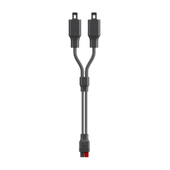














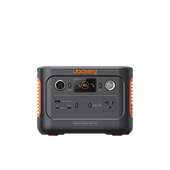

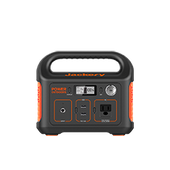


















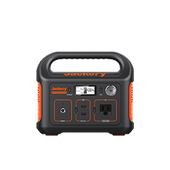


















![Off-Grid Cabin Plans: Ultimate Guide [Building Tips]](http://www.jackery.com/cdn/shop/articles/off_grid_cabin_plans.jpg?v=1722839605)






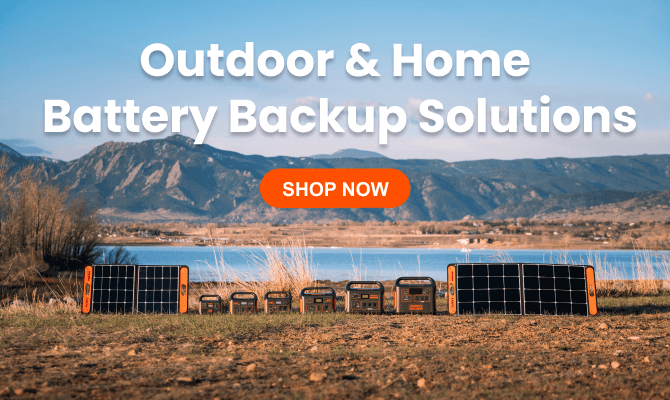
Leave a comment